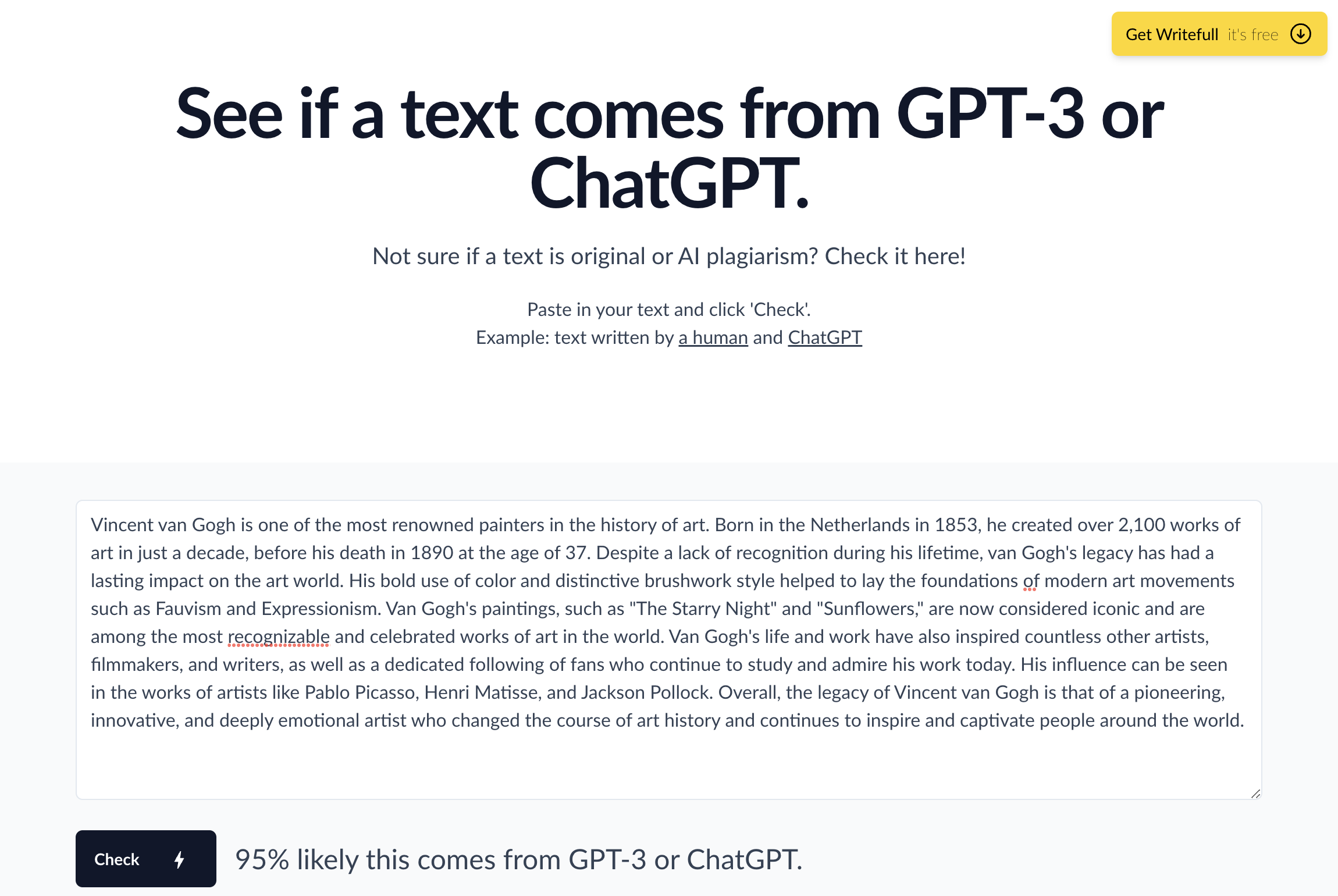With the recent launch of ChatGPT, the discussion about using AI in education is more alive than ever. Teachers increasingly struggle to tell the difference between student-written and GPT-3-generated texts. At the same time, many students wonder if using tools like ChatGPT or Writefull constitutes plagiarism.
AI-assisted plagiarism
When is something plagiarism? The standard definition says you plagiarize when you use somebody else’s ideas or texts as if they were your own. In the case of using AI-generated text, you’re not really using the work of another person, but you are pretending you wrote text that you didn’t. This behavior is referred to as ‘AI-assisted plagiarism’. From an academic integrity point of view, this clearly is a no-go, and the general consensus is that it's plagiarism - regardless of whether you have GPT-3 write you a class assignment or a journal manuscript.
AI for text generation or for language revision
But what about using AI tools to copyedit or tweak your text? Think of Writefull’s automated copyediting, or its Paraphraser and Academizer widgets, where you enter a text to get a rephrase or academic rewrite. Likewise, you can ask ChatGPT to proofread.
In this case, you don’t ask the AI to write you a new text. You’re still presenting your own ideas, but use ChatGPT or Writefull to change your language. Whether you’re paying a proofreader or using an AI tool, the consensus is that it’s perfectly fine to do this. In fact, many publishers have integrated Writefull, and ask their authors to use our AI language check before submitting their paper!
ChatGPT plagiarism checker
Plagiarism with ChatGPT can be caught. At Writefull, we offer a free plagiarism checker tailored to ChatGPT and GPT-3, which teachers can use to quickly check if a text from their student was likely auto-generated using GPT’s models. To give its verdict, the tool evaluates the extent to which a text follows the patterns of ChatGPT’s language. Access Writefull's GPT Detector here.


